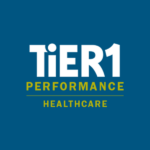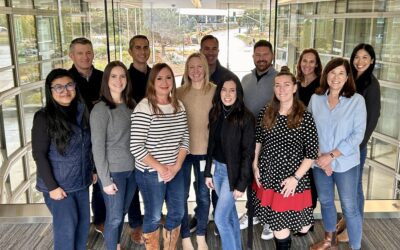According to the American Hospital Association, in 2017 hospitals and health systems spent $39 billion annually on regulatory compliance activities. Is there a better way to invest those budgets, one that frames the opportunities differently and reduces the stress and negative experience of the staff yet fosters a sustainable culture of safety?
From our decades of experience in delivering mock surveys, we’ve identified that the biggest needs are validation, trust, and transparency—validation of expertise, trust that people are carrying out their roles, and transparency in respectfully engaging in debate over the correct delivery of care. Our Performance Experience Design (PXD) model sheds light on efficient ways of working to create a sustainable culture of safety in a healthcare environment. It boils down to this: Leadership ways of working impact the staff experience, which in turn impacts the patient experience and produces results.

We believe the cyclical regulatory survey process creates a fear-based response, with caregivers cramming for the exam in an attempt to raise the performance level to meet the surveyors’ expectations. Caregivers feel pressured to have the right answer to the “gotcha” moment that they may not be prepared to deliver.
In our recent article “Mock Surveys are Missing the Mark on Patient Safety,” we made a case for proposing a different approach to understanding the factors that influence performance to regulatory standards at the point of care.
“We believe there is a set of interrelated factors impacting healthcare organizations’ performance that are not fully investigated through a traditional survey and response approach. When underlying systems, processes, and cultural and behavioral factors that impact risk are not considered, mock and regulatory surveys and associated action plans for improvement can become a cyclical exercise in oversimplifying solutions. Until those factors are uncovered and discussed, the result can be demotivating and frustrating, and can ultimately impact patient outcomes.”
Our goal in this work is to move away from a sole focus on “what you have to fix” and move toward “how might we design a sustainable culture of patient safety.” We may not be able to control how oversight agencies survey, but we can change how we approach regulatory compliance and patient safety. We firmly believe there is a way forward, a way that plays at the intersection of regulation and practice and empowers teams to own the results of their work and ultimately do what they signed up for in the first place—to care for people.
A Systems Approach to Safety
Here’s an example: Due to a shortage of staff and a key manager leaving, the director of Dietary Services is now placed in charge of Environmental Services (EVS) in addition to her current position. Unprepared as she is to fully embrace both, she does her best to manage and motivate her staff while learning quickly about the regulatory requirements impacting EVS. When the surveyors arrive, she knows they’ll find plenty to call out—time was short, and she doesn’t know what she doesn’t know. Despite stellar performance reviews in her other position and her best efforts to prepare, she tells people she’s already packed up her personal belongings because she believes she’ll be fired.
This is an illustration of complex systems at work. We see that there are several structural barriers that this individual is trying to navigate, while at the same time managing less tangible challenges: the impending survey, her fear of ‘impostor syndrome’ with respect to EVS, and the lack of psychological safety that comes from feeling a target on your back. Those systems factors can be categorized in two ways:

- Attitudinal:
- Mindsets (feelings of trust, safety, accountability, and confidence in expertise)
- Power dynamics (leaders modeling and providing psychological safety, recognition, and transparency)
- Relationships (experiencing validation, respect, grace, and support from peers and leaders)
- Structural:
- Policies (established directions for clarity)
- Practices (dictated pathways to expected behaviors)
- Resource flows (tangible support for the above)
Our role as consultants is to show up with curiosity to help uncover those gaps, whether process, cultural, or behavioral, and create space to fully understand barriers and opportunities for the individual at the point of care. By shedding light on both types of systems factors, we can work together to move the culture from one that seeks to solve problems with standards and policies to one that leads with values and principles. A systems approach considers and values each point of view.

Sensing and Listening: Uncovering Moments That Matter
By weaving emotion and empathy into our approach, we not only understand the challenges but also can listen for the successes we hear in the work that caregivers are already doing. Elevating the voices of people on the front line allows us to identify moments that matter for leaders at all levels. Here are some examples:
- Sharing safety challenges and opportunities across the organization through a daily safety huddle
- When events occur, engaging all involved staff in root cause exploration as well as closing the loop with how the issue was resolved
- Modeling access to leadership when the CNO shares their cell phone number with a new nurse manager
- Empowering people to report and document safety concerns without fear of retribution
- Leadership modeling respect for expertise by bringing all levels to the table as decisions are made
- Giving grace to those new to leadership positions who need to learn by doing
- Providing leadership training to those individuals so they can better manage themselves and their staff
- Leadership regularly communicating goals, aspirations, and expectations leading to greater psychological safety
Our process is designed to build on the successes, strengths, and opportunities that serve as a springboard to create an environment where it’s easy to do the right thing and hard to do the wrong thing. When care is provided that not only meets the standards but also engages each caregiver in fully understanding the expectations so they have a voice in designing solutions appropriate for the skill sets of their team and the culture of the organization, everyone benefits.
Because our window for exploration in these engagements is typically short, we can at best provide a ‘pulse check’ for leadership, a snapshot that leads to further consideration. Together, we can help to visualize the system, describing what the problem looks like and identifying gaps and opportunities that can be further explored through TiER1’s D3 process, a method we use to move clients from challenge to solution.
Employing a systems practice mindset allows you not only to step back and take a more in-depth look at the question, but it also gives you tools to ask better questions. The D3 process is designed to build on those questions in three phases:
Discover
First, we begin with conversations around timing. How ready is the organization to embark on this process? What previous efforts have been undertaken, and what have you learned from them? Then we discuss what might be the measurable outcomes or definable behaviors that will indicate success. We often find that initial assumptions can shift considerably throughout the process.
Define
We move into a more detailed review of what we want each individual to think, feel, and do at each point in their journey, then define and co-design specific experiences that will bring about those behavioral and mindset shifts. Developed to reflect best practice, we customize experiences to also reflect the reality on each unit.
Design
Finally, we take those concepts and bring them to life. We design not only the deliverables that built the experience but also the process for engaging within your culture, cognizant of barriers and opportunities that exist. We meet people “where they are” with respect to their time on this journey and build tools to support those who are new to the culture and those who’ve been part of it for years.
Sensing and Learning: Engaging with YOU
Despite our experience in defining processes that address both the structural and attitudinal systems factors that impact safety, we are engaged in a process of continual learning as we strive to understand what will be most helpful to you in this area. We assume that you agree with our premise that the mock survey process as it stands is not helping solve performance issues with respect to standards. If so, we’d also bet that you’re curious about why performance problems persist.
There is a better way. And we’re actively trying to find that better way with you.
This article is one way we’ve attempted to make sense of the challenge and opportunity by thinking through our experiences and proposing solutions. Our next step involves you: Our goal is to walk alongside those in leadership and on the front lines as we learn together. We’re seeking opinions from healthcare leaders in the quality, safety, and accreditation space who’ve participated in a survey process before and are familiar with survey findings and standards. We’d also like to hear from leaders at all levels with insight into the standards cited on previous surveys and whether they continue to challenge those who deliver care. We’ve crafted a three-minute survey to hear directly from experts in our network that share our passion for sustainable solutions and safe, effective patient care. We look forward to hearing from you and other peers as we co-design the solutions together. Thank you for joining us on this journey and completing the survey.
How We Know It Works
We’ve seen the impact firsthand as we’ve developed this point of view with our clients and colleagues, but of course we haven’t done it on our own. Our research has also been rooted in the work of others. For more information on the science behind our thinking, consider checking out these resources:
- TiER1: The Neuroscience of Accountability
- Harvard Business Review: The Competitive Imperative of Learning
- TiER1: Performance Principles
- The Omidyar Group: Systems Practice Mindsets
Here are examples of some tools that we may use to get the process started:
Interested in continuing this conversation? We’d love to discuss how we can help your healthcare organization ensure regulatory compliance and improve patient safety. Fill out the form below or give us a shout at hello@tier1performance.com.
TiER1 Healthcare Consultants Mark VanderKlipp and Tasha Deitschman collaborated on this article.




